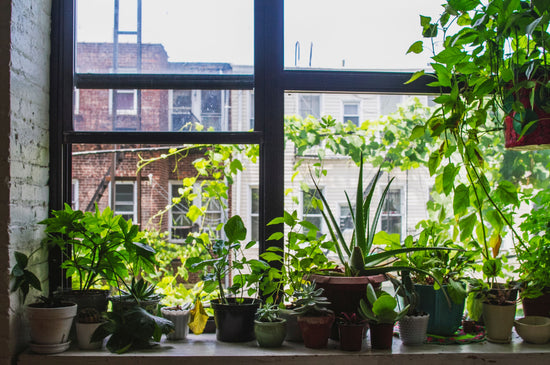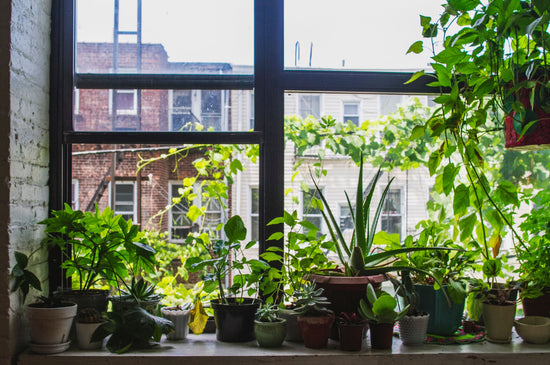The Hidden Dangers of Winter for Houseplants (And How to Avoid Them)
Winter can be a challenging season for houseplants. While these indoor beauties bring warmth and life to our homes, the colder months present unique threats that can jeopardize their health. From dry indoor air to limited sunlight, winter conditions can silently wreak havoc on your cherished greenery. Here’s an in-depth look at the hidden dangers of winter for houseplants and how you can protect them.
The Perils of Low Humidity
One of the most significant challenges for houseplants in winter is low humidity. Central heating systems dry out indoor air, creating an environment that is less than ideal for tropical houseplants like the peace lily and philodendron. These plants thrive in humidity levels of 50% or higher, but indoor humidity often plummets to 20% or less during winter.
How to Avoid It:
- Group Your Plants: Clustering plants together creates a microclimate with higher humidity.
- Use a Humidifier: Investing in a quality humidifier can maintain optimal moisture levels for your plants.
- Mist Strategically: Light misting can help, especially for plants like the zanzibar gem plant or devil's ivy, but avoid overdoing it as excessive water on leaves can encourage mold.
Limited Sunlight Exposure
Shorter days and overcast skies mean your plants are receiving less sunlight, a key ingredient for photosynthesis. Even plants that tolerate low light, such as the zz plant and snake plant, can struggle in winter.
How to Avoid It:
- Rotate Your Plants: Move them closer to south-facing windows or other bright spots in your home.
- Supplement with Grow Lights: LED grow lights can mimic natural sunlight and keep your plants happy during the darkest months.
- Dust Those Leaves: A thin layer of dust can block light absorption. Clean the leaves of your spider plant or pothos regularly to maximize their exposure.
Overwatering Woes
With less light and slower growth, houseplants require less water during winter. However, many plant owners inadvertently overwater, leading to root rot—a common cause of houseplant death.
How to Avoid It:
- Check the Soil: Before watering, stick your finger an inch into the soil. If it feels dry, it’s time to water.
- Adjust Your Routine: Reduce the frequency of watering and ensure your christmas cactus or chlorophytum spider plant has well-draining soil.
- Use Planters with Drainage: An indoor planter with drainage holes prevents water from accumulating and suffocating the roots.
Temperature Fluctuations
Sudden drops in temperature, cold drafts from windows, or heat blasts from radiators can stress your plants. Tropical varieties like the peace lily and philodendron are especially sensitive to these changes.
How to Avoid It:
- Monitor Placement: Keep plants away from cold drafts, windowsills, and direct heat sources.
- Use Insulation: If your plants are near windows, use curtains or thermal barriers to protect them from the chill.
- Maintain a Stable Temperature: Most houseplants thrive in temperatures between 65°F and 75°F.
Pest Infestations
Winter doesn’t mean a reprieve from pests. In fact, dry indoor air can attract spider mites, while overwatered plants may become breeding grounds for fungus gnats.
How to Avoid It:
- Inspect Regularly: Check your plants for signs of pests, such as webbing or tiny insects.
- Use Neem Oil: This natural pesticide is effective against a wide range of pests and safe for indoor use.
- Quarantine New Plants: Before introducing new plants into your home, keep them isolated for a week to ensure they’re pest-free.
Nutrient Deficiency
During winter, plants grow more slowly or enter dormancy, reducing their need for nutrients. Over-fertilizing during this time can harm their roots or cause salt buildup in the soil.
How to Avoid It:
- Pause Fertilizing: Skip fertilization until spring, when growth resumes.
- Flush the Soil: Every few months, flush your plant’s soil with water to remove any built-up salts.
Houseplants That Thrive in Winter
Some plants are naturally more resilient and better equipped to handle winter conditions. Here are a few examples:
- Snake Plant (Sansevieria): This low-maintenance plant tolerates low light and infrequent watering.
- Christmas Cactus (Schlumbergera): A winter bloomer that adds vibrant color to your home.
- ZZ Plant (Zamioculcas zamiifolia): Known for its drought tolerance and adaptability.
- Pothos (Epipremnum aureum): Thrives in a range of conditions, making it a reliable choice for beginners.
Protect Your Plants with Wekiva Foliage
At Wekiva Foliage, we offer a wide range of houseplants perfect for every home, including zanzibar gem plants and chlorophytum spider plants. Whether you’re looking for low-light options or winter bloomers like the christmas cactus, we have everything you need to keep your indoor jungle thriving.
FAQ
Q1: How often should I water houseplants in winter?
A1: Water less frequently, checking the soil for dryness before watering.
Q2: Do all houseplants need a humidifier in winter?
A2: While tropical plants benefit greatly, hardy plants like the snake plant can adapt to lower humidity.
Q3: Can I fertilize my plants during winter?
A3: It’s best to pause fertilization until spring, as most plants enter a dormant phase.
Q4: How do I prevent pests during winter?
A4: Inspect plants regularly, keep humidity balanced, and use natural pest control like neem oil.
Q5: Are there any houseplants that bloom in winter?
A5: Yes, the christmas cactus is a popular choice for its vibrant winter blooms.
For more expert tips and a curated selection of houseplants, visit Wekiva Foliage.





